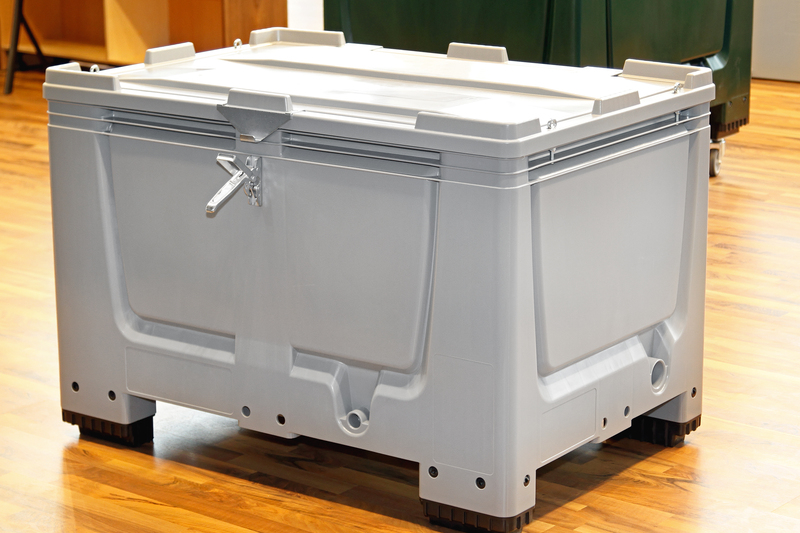The Safe Way to Move a Piano: Why DIY Falls Short
Posted on 21/05/2025
The Safe Way to Move a Piano: Why DIY Falls Short
Pianos are not just beautiful musical instruments--they are intricate and heavy works of art that demand utmost care during a move. Whether you own an upright, a grand, or a baby grand, moving a piano involves unique challenges and significant risks. Here, we discuss the safe way to move a piano and explore why DIY efforts often fall short, both in terms of safety and overall cost.
Understanding the Challenges of Piano Moving
Pianos come in various shapes and sizes, and all models share two things: substantial weight and delicate construction. The average piano weighs anywhere between 300 to 1,200 pounds, with most grand pianos leaning toward the heavier side. But it's not just the weight that poses a problem--every piano contains thousands of delicate moving parts, making improper handling a recipe for costly disaster.
- Complex internal mechanics: Strings, hammers, and keys can easily be damaged by a sudden jolt.
- Awkward, unbalanced shape: Irregular distribution of weight makes pianos quite difficult to carry safely.
- Risk of personal injury: Without proper tools and training, movers can suffer back injuries, crushed fingers, or worse.
- Potential property damage: Walls, stairs, floors, and door frames are all at risk when moving something as cumbersome as a piano.

What Makes a Professional Piano Move Different?
Specialized Equipment and Tools
Professional piano movers use dedicated equipment designed for heavy high-value items. Furniture dollies, piano skids, straps, harnesses, and padding are just a few examples. These tools help in lifting--without unnatural strain--and offer protection to both the instrument and your property.
Expertise in Maneuvering Large Instruments
Moving a piano safely isn't just about muscle power. Experts possess unique experience in navigating stairs, tight corners, and doorways. They anticipate obstacles, protecting the piano's structural integrity and finish.
Insurance Coverage for Peace of Mind
Most reputable piano moving companies are insured. This means that in the rare event of a mishap, your instrument and property are covered. In contrast, if you attempt a DIY piano move and damage occurs, you may face significant out-of-pocket expenses.
Common Piano Moving Mistakes - The Dangers of DIY
While some households consider a DIY approach to save on costs, this strategy often leads to far more expensive repairs or medical bills. Below, we list the most common mistakes:
- Using improper lifting techniques - leads to serious back, shoulder, or finger injuries.
- Inadequate manpower - Most pianos require at least 3-4 strong adults and careful coordination.
- Lack of suitable equipment - Regular dollies or moving blankets do not suffice for the piano's size and weight.
- Misjudging spatial constraints - Pianos may not fit through stairwells or doorways without partial disassembly.
- Failure to secure the piano in transit - Can result in irreparable internal or external damage during the move.
The Step-by-Step Safe Way to Move a Piano
1. Planning and Preparation
- Measure all hallways, doors, and stairwells the piano must pass through.
- Clear the pathways, removing rugs, furniture, and obstacles that could cause tripping or delay.
- Assemble a skilled team with experience in heavy lifting--never attempt to move a piano alone.
- Rent or acquire the correct moving tools: piano dolly, heavy-duty straps, padding, and moving blankets.
2. Securing the Piano
- Close and lock the lid to protect the keys.
- Wrap the entire instrument with moving blankets and secure with tape or straps (avoid direct tape contact with wood finishes).
- Disassemble legs, pedals, and music stands if moving a grand or baby grand piano (store hardware separately).
3. Lifting and Moving
- Always lift with your legs--never your back!
- Keep the piano upright to avoid internal damage to the frame or action.
- Secure the piano firmly to the dolly, making sure it's balanced before moving.
- Carefully maneuver through tight spaces, using slow, deliberate movements.
4. Transport and Unloading
- Use a ramp to load the piano into the moving truck, keeping the instrument upright at all times.
- Secure the piano in the truck with additional straps to prevent movement during transit.
- Unload with the same care, and reassemble any removed parts.
Why Trusting Professionals Is the Safest Way to Move a Piano
Moving a piano safely requires expertise and attention to detail. Professional piano movers bring both. By hiring experts, you:
- Reduce risk to yourself and your helpers--no heavy lifting, no potential injuries.
- Protect your investment--avoid cosmetic and mechanical damage to your valuable instrument.
- Save money in the long run--no expensive repairs or medical bills from a mishap.
- Save time and stress--experts move pianos quickly and efficiently, so you can concentrate on other moving concerns.
What to Look for in a Professional Piano Moving Company
When selecting a company, consider these important factors:
- Specialization in piano moving--not every mover has the expertise you need.
- Fully insured and licensed--for your protection and peace of mind.
- Stellar reputation--look for reviews, recommendations, and a long track record of successful piano moves.
- Transparent pricing--avoid companies that offer suspiciously low rates (they may cut corners).

FAQs: Safe Piano Moving and DIY Myths
1. Can I move a small upright piano myself?
Even small upright pianos weigh several hundred pounds and have delicate internal components. Unless you have the right equipment, several strong and experienced helpers, and experience, it is highly risky.
2. Is it cheaper to move a piano myself?
While DIY may seem less expensive, the potential for costly damages or injury is high. Professional piano movers offer insurance and experience, ultimately saving you money and stress.
3. How much does it cost to hire professional piano movers?
Costs vary depending on the type of piano, distance, and difficulty of the move. However, reputable companies will offer competitive, transparent quotes. Remember: it's a small price to protect a valuable investment.
4. What if my piano doesn't fit through a doorway or stairwell?
Professional piano movers are trained to partially disassemble pianos (such as removing legs or lids) and reassemble them correctly. Attempting this without training risks irreparable damage.
5. Will moving a piano affect its tuning?
Pianos may require tuning after a move due to changes in humidity, temperature, or positioning. This is a normal part of the process and should be budgeted for in your move.
Conclusion: The Smart Way to Move a Piano
Choosing the safe way to move a piano is not just about getting it from point A to B. It's protecting an expensive, cherished instrument--and quite possibly your health and home. While DIY piano moving might seem manageable with enough muscle, the unique challenges make it much wiser to leave it to the skilled hands of professionals. When it comes to your beloved piano's move, trust experience, specialized equipment, and proper insurance for complete peace of mind.
If you're planning a move and need to relocate a piano, remember: safety, security, and experience are worth every penny. Don't let a DIY attempt turn your piano adventure into a calamity. Rely on proven experts for the best and safest piano moving experience possible.



